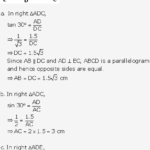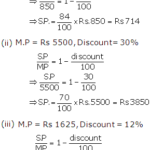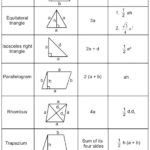Frank ICSE Solutions for Class 9 Maths - Trigonometrical Ratios of Standard Angles Ex No: 27.1 Solution 1.Solution 2.Solution 3a.Solution 3b.Solution 3c.Solution 3d.Solution 4a.Solution 4b.Solution 4c.Solution 4d.Solution 4e.Solution 4f.Solution 5a.Solution 5b.Solution 6.Solution … [Read more...] about Frank ICSE Solutions for Class 9 Maths – Trigonometrical Ratios of Standard Angles
Mathematics
Frank ICSE Solutions for Class 9 Maths Profit, Loss and Discount Ex 2.4
Frank ICSE Solutions for Class 9 Maths Profit, Loss and Discount Ex 2.4 Frank ICSE Solutions for Class 9 Maths Profit, Loss and Discount Ex 2.4 Solution 1.Solution 2.Solution 3.Solution 4.Solution 5.Solution 6.Solution 7.Solution 8.Solution 9.Solution 10.Solution 11.Solution 12.Solution 13.Solution … [Read more...] about Frank ICSE Solutions for Class 9 Maths Profit, Loss and Discount Ex 2.4
Mensuration RS Aggarwal Class 7 Maths Solutions Exercise 20F
Mensuration RS Aggarwal Class 7 Maths Solutions Exercise 20FMensuration RS Aggarwal Class 7 Maths Solutions Exercise 20Fhttps://www.youtube.com/watch?v=O-cawByg2aAQ1Q2Q3Q4Q5Q6Q7Q8Q9Q10Q11Q12Q13Q14https://www.youtube.com/watch?v=m3dwUx5pXj8&spfreload=1Q15Q16For More Resources … [Read more...] about Mensuration RS Aggarwal Class 7 Maths Solutions Exercise 20F
What is the meaning of Place Value and Face Value in Maths
What is the meaning of Place Value and Face Value in Maths Difference Between Face Value And Place Value Place value and face value: The place value of a digit of a number depends upon its position in the number. The face value of a digit of a number does not depend upon its position in the number. It always remains the same wherever it lies regardless of the place it … [Read more...] about What is the meaning of Place Value and Face Value in Maths
Profit and Loss RS Aggarwal Class 8 Maths Solutions Ex 10B
Profit and Loss RS Aggarwal Class 8 Maths Solutions Ex 10Bhttps://www.youtube.com/watch?v=AcGIfWLjjAUQ1.Profit and Loss RS Aggarwal Class 8 Maths Solutions Ex 10BQ1.Q2.Q3.Q4.Q5.Q6.Q7.Q8.Q9.Q10.Q11.Q12.Q13.Q14.For More ResourcesRS Aggarwal Class 8 Solutions RD Sharma Class 8 … [Read more...] about Profit and Loss RS Aggarwal Class 8 Maths Solutions Ex 10B




